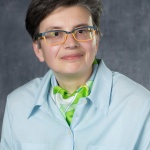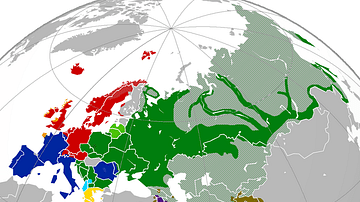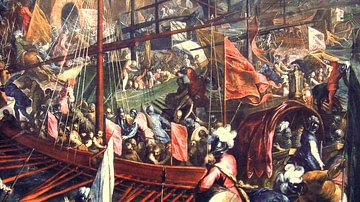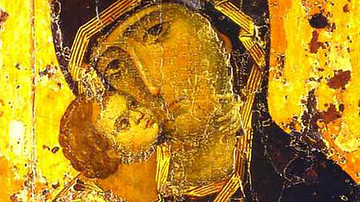In the wake of the downfall of the Western Roman Empire and the intellectual collapse of Athens, Byzantine scholars engaged in preserving the Classical Greek language and its literature. Thus they became the guardians of a vanished culture. This article presents the grammatical and literary efforts of a few of the most famous Byzantine scholars, from Arcadius of Antioch to George Choumnos.
Preserving the Greek Language
Making a grammar book was one of the principal tools of Byzantine scholars to preserve the correct form of Classical Greek. Grammar books contained in concise form all the standards set by the classical authors. Particular attention was paid to morphological inflexions of nouns and verbs and to the function of nouns and verbs as constituents of syntactic structures. Preservation of the Classical Greek language was supported by explanatory and critical notes in the margin or between the lines of the manuscripts of ancient authors. In addition, paraphrasing ecclesiastical books was a way to make the teachings of the Church more comprehensible to the poorly educated. These deeds contributed to the revival of Greek language and literature in the Byzantine Empire and constituted a significant part of the culture of Renaissance Europe.
The celebrated grammarians and poets considered here are:
- Arcadius of Antioch (2nd CE)
- Arsenios of Monemvasia (aka Aristoboulos, 1465-1535 CE)
- George Choumnos (end of the 16th century CE)
- Ioannes Charax (6th century - 9th century CE)
- Orus (6th century CE)
- Theodoretos (c. 6th century CE)
Arcadius of Antioch
Life
Arcadius was a Greek grammarian, who flourished in the 2nd century CE. He belonged in all likelihood to the family of Apollonius Dyscolos, one of the most prominent grammarians. He is mentioned by Stephanus of Byzantium in his Ethnika and Georgios Choeroboscus in his Scholia in Theodosium.
Works
Arcadius is included in the catalogue of grammarians in Kröhnert (Canones 7) under the heading hosoi grammatikoi. According to the Suda (A.3948), Arkadius, grammatikos, Antiocheus is the author of the following works:
- Peri orthographias ('On Orthography')
- Peri suntakseôs tôn tou logou merôn ('On the Syntax of the Parts of Discourse')
- Onomatikon thaumasion ('Wonderful Onomasticon').
In addition, his work on accents (Peri tonôn) has survived and was published by Barker (1860) and by Dindorf (1823).
Arcadius is cited in the geographical dictionary entitled Ethnika of Stephanus of Byzantium (6th century CE) (Ethnika s.vv. Aktion, Aigosthena, Daskylion, Zephyrion, Lyrnatia, Molykria, Niphates, Chairôneia) as well as in Georgios Choeroboscus, an early 9th-century Byzantine grammarian and deacon, (Schol. in Theodos.) (GG 4.1.196.33, 205.28-29) where he is mentioned together with Orus of Alexandria (3rd quarter of the 5 century CE) and Eudaemon of Pelusium (ca 337-392 CE). He is cited again with the latter by Stephanus of Byzantium (Ethnika s.v. Daskylion).
Two Paris manuscripts wrongly attributed to Arcadius in the epitome of 19 books of Herodian’s work on Katholiké prosodia (Schmidt 1860; Egenolff 1887; Galland 1882; Cohn 1895). This work most likely belongs either to Theodosius of Alexandria (c. 3rd century CE), the author of Kanones eisagôgikoi peri kliseôs onomatôn kai rématôn ('Introduction to The Rules of Noun and Verb Declension'), or to a grammarian called Aristodemus, who probably did not lived before 4th century CE. Although Arcadius did not write the epitome of the Herodian or Herodianus of Antioch (c. 170-c. 240), the titles of the works ascribed to him led to the belief that he was an epigonus of Herodian or of Herodian’s father, Apollonius Dyscolos, one of the greatest Greek grammarians (2nd century CE) (Kröhnert, Canones 7). The 20th book of the Katholiké prosodia is the work of a forger of the 16th century. Nevertheless, as it maintains the order of the original, it may be considered as a valuable basis for its reconstruction.
Arsenios (or Aristoboulos) of Monemvasia
Life
Born in Chandaka (Herakleio), Arsenios (or Aristoboulos) of Monemvasia was a Cretan grammarian, the son of the scholar Michael Apostoles or Aposotolius (c. 1420-1474 or 1486 CE) and, from his mother's side, the grandson of Theodosius, the earl of Corinthus (komis Korinhtios). His birth name was Aristobulus and he took the name of Arsenius at the moment of his elevation to the Episcopate. He is sometimes called also Apostoles Paroemiographus (Apostoles the proverb-writer). Before being ordained as a deacon, he was a copyist of manuscripts like his father. In 1492, he was invited by Laurentius Medicus to Florence where he worked on Greek manuscripts. In 1495, he took part in the Aldus Manutius Greek impressions. He was a student of Antonios Karmalikes, a teacher of Greek in Rome and a member of Nea Akademia. In 1506-1511, he was ordained as the Metropolitan Bishop of Monemvasia by the Roma Curia. In 1509, he resigned at the request of the Oecumenical Patriarchat Pachomios I and retired to Venice where he died in 1539. Arsenios is widely known for his epigram entitled Thesaurus Cornucopiae et Horti Adonis and the preparation of the edition of Theodorus Prodromus’ Galeomyomachy. His works also include collections of apophthegms and scholies, as well as epigrams.
Career
After his father’s death, he initially earned his living by transcribing ancient Greek manuscripts. About 50 manuscripts have come down through the centuries, of which only three are dated, the oldest being 31 March 1489. He then decided to become a monk and was afterwards ordained as a deacon. On April 1492 he signed a contract with Janus Lascaris, aka John Rhyndacenus (1445-1535 CE), a renowned Greek scholar of the Renaissance, in the quest for Greek manuscripts for the Library of Laurentius Medicus. Upon the invitation of the latter in 1402 he went to Florence where he met Petrus Medicus and Aldus Pius Manutius (ca. 1449-1515 CE), an Italian humanist, scholar and educator. When, in 1495, Aldus Manutius began his Greek impressions, he was one of the first collaborators along with Marcus Musurus (c. 1470-1517 CE), a Greek philosopher and teacher of Greek. In 1496, he composed an epigram of four verses entitled Thesaurus Cornucopiae et Horti Adonis for a volume of Greek Grammarians from the Aldine presses. He also prepared an edition of Theodorus Prodromus (also called ‘Ptochoprodromos') Galeomyomachy, published by the same press. A dispute between Arsenios and the owner of the press ended their collaboration. During his stay, he was elected as a member of Nea Akademia. According to Theodosius Zygomalas (1544-1607 CE), a Greek scholar, philologist and copyist of manuscripts, he was a disciple of the Megas Rhétor Antonios Karmalikes.
He left Crete definitively in 1504 and settled in Rome where he converted to Catholicism. Due to his extreme poverty, he lived on the charity of Pope Leon I (1475-1521). According to Antonios Phrakinos, he taught Greek to those who were awarded a papal grant to support their education. During the second period of the Patriarchate of Pachomios I (1506-1511), he went to Monemvasia, a town in Laconia, and, after literally pursuing the Christian Orthodox Bishop, he was ordained Metropolitan Bishop of Monemvasia by the Roman Curia. Arsenios declared himself in communion both with the Orthodox Patriarchate in Constantinople and with the Catholic Church in Rome. Considering the situation as intolerable, Pachomios I requested Arsenios’ resignation. In 1509, the Patriarch excommunicated Arsenios who retired to Venice. Although he was excommunicated by the Patriarch and the Holy Synodos, he continued ordaining deacons and priests, and performing all the duties of a bishop.
In Venice, Arsenios created a strong friendship with Desiderius Erasmus of Rotterdam (c. 1469-1536), a Dutch philosopher and one of the greatest scholars of the Renaissance, and restarted collaborating with Aldus Manutius. In 1521, he was appointed as the director of a Greek college in Florence. He wrote the preface to an edition of Aristophanes by Antonio Franchini, which was published by the Giunti’s Florentini press in 1525. As this work mentions this stay in the Greek college in the past, one assumes that he left Florence before 1525.
On March 30, 1534, in Venice, he was designated by the Council of Ten, with the support of the Holy See, preacher of the San Giorgio dei Greci Church. He died in 1539 and was laid to rest in the Church, where a tomb was raised by one of his nephews for him.
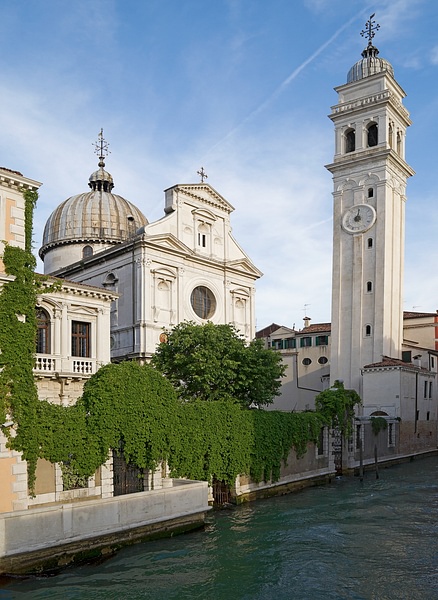
Works
Arsenios completed and published a collection of apophthegms of philosophers, orators, and poets, drawn from the Iônia of his father. The collection was published in Rome in 1519. The volume also includes a small dialogue of its compositions, between a bibliophile, a bookseller and the book personified. A great number of scholars attributed the collection to Arsenios. Among them, Christian Waltz reproduced it in Stuttgart in 1832 under the title Arsenii Violetum. He also wrote several prefaces to editions of ancient authors as well as a great number of letters.
The following works by Arsenios have come down to us:
- Alkinoou logos didaskalikos tôn tou Platônos dogmatôn. Venetia [s. n.]
- Apophthegmata philosophôn kai stratégôn, rhétorôn kai poiétôn. Rome 1515
- Epigramma eis Hieronumon Donaton, dioikétén Krétés. [s.l.] [s.n.]
- Epigramma eis Képon Adônidos. Venice 1496
- Epigramma hellénolatinisti eis ta tessera Euaggelia. [s.l.] [s.n.]
- Leksikon philologikon. [s.l.] [s.n.]
- Peri poiétikés. [s.l.] [s.n.]
- Prolegomena eis Galeomuomachian. [s.l.] [s.n.]
- Scholia eis Aristophanén. Florence [s.n.] 1525
- Schola eis Pindaron. [s.l.] [s.n.]
- Scholia tôn panu eudokimôn eis hepta tragôdias tou Euripidou. Basiliae [s.n.] 1544
- Syntagma logikon, ek Michaél Psellou, Niképhorou Blemmudou kai Geôrgiou Pachumeré. Paris [s.n.] 1510.
George Choumnos
Life
Georges Choumnos was a Cretan poet, probably of Catholic faith, from Chandaka (alias Herakleio or Heraklion), a city in East Crete. His identity is uncertain but he is celebrated for his 28,000-verse poem called Kosmogennesis. He is to be identified with either a goldsmith who is mentioned between 1430-1472 or a public notary who was active in Kastro between 1464 and 1500. The second identification is most likely to be valid. Indeed, in her will dated of 29th June 1502 and edited by Sathas (1877), Maria Kapellaina stated that she left to his son all his dowry given by his father, as written in it by the notary Kyr Georges Choumnos from Chandaka. On the basis of this statement one can assume that George Choumnos was an active public notary in Chandaka in the early 1500s. This can be confirmed by the information provided from the archive number 137 of the Spyros Theotokes’s catalog of public notaries in Crete, which is nowadays located in Venice. According to this archive, there is a mention of a public notary called George Choumnos who lived in Chandaka from 1480 to 1500.
Works
In his effort to make the teachings of the church more easily available and intelligible to those less educated, Choumnos wrote a long poem entitled Kosmogennesis ('The Creation of the World') or Palaion dia stichôn ('Old Testament in Verses'). The poem is considered as a religious and edifying work of no great literary value. It is written in demotic rhymed verse with 15 syllables per line. It encompasses the period from the creation of the world through the kingdoms of David and Solomon (the two first books of the Old Testament). The poem was transmitted in no fewer than five manuscripts and is found in the Greek Theological Codex (Nessel) folio 2-19 as well as the Greek Classical Markianus Codex IX 17 folio 1-70. The Greek Theological Codex (Nessel) bears the following title: “George Choumnos from the illustrious and fortunate island of Crete, from the city of Chandaka”. On the other hand, the Markianus Codex is entitled as follows: “The Kosmogennesis transformed into poem by Kyros Georgios Choumnos.” The Markianus Codex also includes other rhyming poems and religious prayers, such as a poem to Jesus, composed of 222 verses, followed by Pope John XII’s prayer, prayers to Saint Spirit, to Theotokos, and to Saint Francis, Saint Thomas Aquinas’ prayer during the Holy Communion, verses to Theotokos, a poem referring to death, a praise to Theotokos by father Andreas Skletzas, and, finally, teachings about the benefits of Memorial Services.
According to the manuscript located in the British Museum, only the sections dealing with Genesis and Exodus have been published in the journal entitled Byzantinai kai Neoellénikai epetérides. In 1925, Kosmogenesis was translated and commented into English by F.H. Marshall and published by Cambridge University Press. In Greece it was published (with commentary and glossary) by George Megas in 1975. Also, it was the thesis topic of Vassileios Kleitsas in 2019. The author provided a new critical edition with a commentary which described, classified and evaluated the preserved manuscripts of this work. He also gave a description of the images found in the modern manuscripts. Moreover, he presented the more recent editions of the poem and described its language and the verse technique. To this are added a summary of the poem’s content as well as information about the identity of the poet, his education and his reading public.
Ioannes Charax
Life
Ioannes Charax was a Greek grammarian and an Orthodox Christian whose dates cannot be determined with certainty. He was probably active probably between the second half of the 6th and the 9th century CE based on his citations on Ioannes Philoponos (490-570 CE), a Byzantine Alexandrian philologist, Aristotelian commentator and Christian theologian, known for his countless philosophical and theological works, as well as his own treatises (cited four times by Georgios Choeroboscus in his Scholia in Theodosium (9th century CE). This assertion is validated by certain fragments of his commentary on Theodosius’ Canones, which survive in the form of excerpts by the Greek Orthodox Patriarchate of Alexandria and All Africa Sophronius I (841-860 CE). These excerpts claim that Charax was a teacher, which suggests that his commentary originated as a set of lectures or as a course of study given on the Canones. Thus, the commentary was not originally a written treatise, but rather an apo phônés one (‘by voice’).
Works
A fragment of Charax’s Peri tôn ôn (sc. légontôn) has been preserved by Sophronius and is inserted after the scholia on Canon 25 of Theodosius and refers to the same topic. Charax also wrote the treatises Peri tôn egklinomenôn and Peri Orthographias, both of which are based on Herodian, as well as Peri dialektôn. The work Peri tôn egklinomenôn was first published in the collection entitled Thesaurus Cornucopiae et Horti Adonidis and printed by Aldus Manutius (Venice 1469) and secondly subjoined to the Dictionarium Graecum printed by Aldus Manutius (Venice 1524) and among those subjoined to that printed by Melchior Sessa and Petrus de Ravanis (Venice 1525). Regardless of these three editions, the treatise is included, as if for the first time, by Iriarte in the Regiae Bibliothecae Matritensis Codices Graeci MSS. The works Peri Orthographias and Peri dialektôn were also published in the collection Thesaurus Cornucopiae et Horti Adonidis. The latter work is mostly attributed to Ioannes Philoponus.
Orus
Life
According to Suda Ω.201, Orus is a native Alexandrian grammarian who was a teacher at the Imperial University of Constantinople. His name is often confused with that of grammarian Orion called ho grammatikos (‘the grammarian’) who also taught in Constantinople. In some manuscripts, his name is followed by the designation ho mel or ho ml, which has led modern scholars to think that he was originally from Miletus, and subsequently to establish Orus ho Milésios (Etym. Genuin.). This suggestion has been rejected by other experts who saw in these fragmentary citations the beginning of the article melas, referring to his continental origin. Among them are counted Reitzenstein and Wendel , who compares the term melas with melagchroes (Hdt., 2.104.2) of the Egyptians (cf. also the expression indicating another Egyptian grammarian Pamprepius in Damasc. V. Isid. Fr. 178 Zintzen.
Orus’s work on Ethnics (Hopôs ta ethnica lekteon) can be dated after 438. Citations of Stephanus of Byzantium on Orus in his Ethnica lead some commentators to assume that he had been his predecessor in the Imperial University. Most of these citations were eliminated when the Ethnica was shortened by an epitomizer. But an attempt at reconstruction has been undertaken by M. Billerbeck who included only the fragments that belong exclusively to Orus.
Works
The most famous works by (or attributed to) Orus are the following:
- Kata Phrynichou kata stoicheion
- Peri dichronôn
- Peri egklitikôn
- Orthographia kata stoicheion
- Peri tés ei diphthoggou
- Orthographia peri tés ai diphthoggou
- Poinaks tôn heautou
- Peri polusémantôn lekseôn
- Iliaké prosôdia
- Peri pathôn.
In more detail, the above works cover the following subjects: a treatment against Phrynichus (Kata Phrynichou kata stoicheion), in which he controverted the views of Phrynichus on points of Attic usage. Fragments of this work are preserved in the Atticist Lexicon of Zonaras and have been published by Alpers (1981). It is noteworthy that Orus is most likely one of the authorities followed in the Anti-Atticist dictionary. A work on vowels of ambiguous quantity (Peri dichronôn) (also listed in Kröhnert, Canonesne 7). This treatise is preserved in a compilation inscribed Arché tôn tonizomenôn lekseôn parekselechthentôn toutôn ek tôn Horou, Choiroboskou, Aitheriou grammatikou, Philoponou kai hetérôn. A text concerning Herodian (Lyseis protaseôn tôn Herodianou). Works on enclitics (Peri egklitikôn) and orthography (Orthographia kata stoicheion, Peri tés ei diphthoggou, Orthographia peri tés ai diphthoggou). The hypomnéma tés orthographias tôn hérôôn is attributed in the Etym. Gud. (s.v. ksiris, p. 415 Sturz). Extracts of Orus’s orthographical works are cited in Rabe (1892, 1895). A catalogue of his own works (Poinaks tôn heautou); Fragments of his work on Peri polusémantôn lekseôn have also survived. It is preserved in codd. Paris. gr 2720 (= Cramer, 1839-1840 4.262.4ff., 2558 and 2830); The works Iliaké prosôdia and Peri pathôn, both possibly authored by Herodian, have been dubiously attributed to Orus. Finally, a commentary on Hephaestion seems to be indicated by the citations of Orus in Choerobosc. Schol. in Hephaest. Fragments of this work are in all likelihood preserved in Scholia A to Hephaestion (Cornsbruch 1971 p. XIV, 91ff.)
Theodoretos
Life
Theodoretos was a Greek grammarian and possibly poet, who lived in the 6th century CE. Theodoretos may be identified with Theodoretos the grammarian, the author of an epigram on the governor Philippus, which is preserved as Ant. Gr. 16.34. It was engraved on a statue erected at Smyrna by the city of Philadelphia in honor of the governor Philippus. It may have been gathered in the Cycle of Agathias, which would provide a terminus ante quem of c. 568.
Works
Theodoretos is the author of Peri pneumatôn, which is a part of the 20th book of the Katholiké prosodia of Herodian. It was included in the Mischlexicon ek tôn peri pneumatôn Truphônos, Choiroboscou, Theodôritou kai heterôn in Valckenaer, Ammonius 188 and introduced by a short twelve-line epigram that dedicates the work to a certain Patricius. The fact that he produced an epitome of Herodian leads to the belief that he cannot be dated before 6th century CE and may belong to 5th-6th century CE, as the names ‘Theodoretus’ and ‘Patricius’ suggest.
